Volcanologists At WorkThis offers a glimpse of life and work of scientists on Etna. Although anyone may climb partway up
Mount Etna it is less easy to meet volcanologists on the volcano. At the end of May 2001 Roberto Carniel
participated in a geophysical data acquisition campaign on Stromboli and Etna, involving volcanologists
from INGV, University of Florence, GEOMAR Kiel, Alaska Volcano Observatory and the Universities of North
Carolina and Hawaii. Thanks to invaluable assistance of the INGV - Catania section, SOL photographer
Marco Fulle had the opportunity to follow some of their field work and the difficulties caused by the
adverse environment. As usual the 16 pictures on this page link to larger photos (about 40 to 100 KB). |
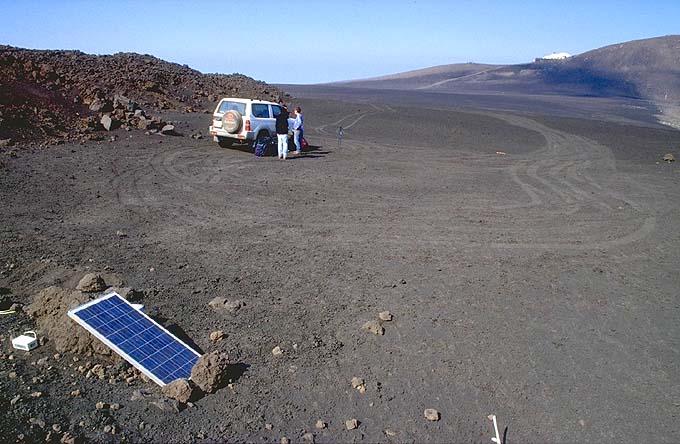 Many permanent seismic stations are maintained on Etna by INGV: see jeep top left) to monitor volcanic tremor and volcanic and volcano-tectonic earthquakes. During the experiment additional seismic stations are temporarily installed. The solar panel of the station at Piano delle Concazze is on the lower left, Pizzi Deneri Observatory top right. | 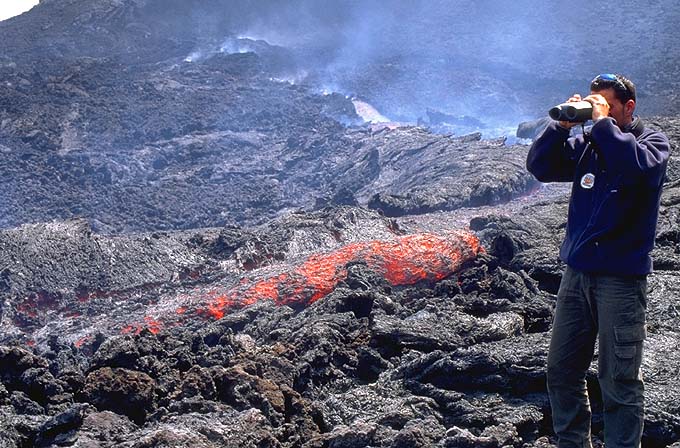 Salvo Consoli (INGV - Catania section) uses a telemeter to measure the distance to a detail of the lava flow. This allows him to cover the whole lava channel by triangulation, in order to precisely measure tits length, and then to deduce the flow speed of the lava. Assumptions on the cross section of the flow then allow him to estimate the effusion rate. | 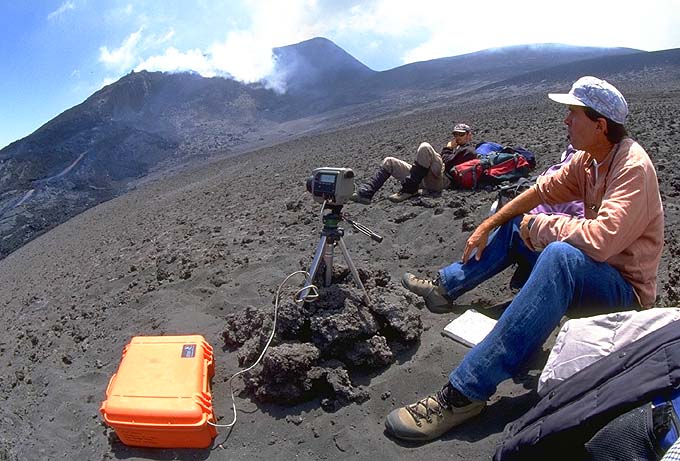 An infrared radiometer (mounted on the tripod at center) allows the volcanologist Scott Rowland (right) to follow the temperature evolution of the lava flow without the need to approach the vent. The orange suitcase contains the electronic data logger which records all collected data. John Bailey takes a break in the background. | 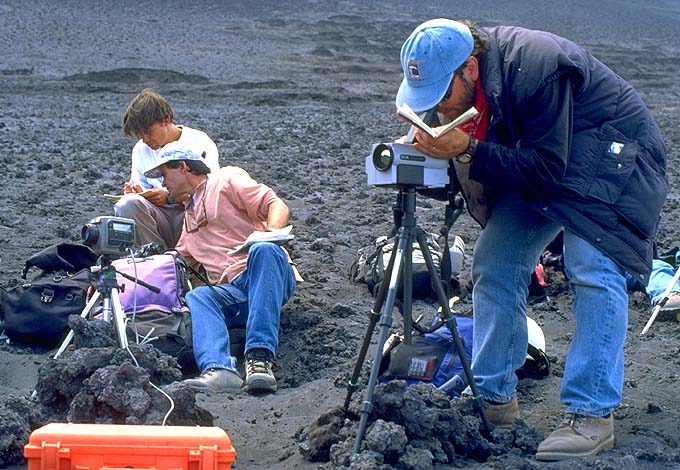 The volcanic environment is hard on the electronics. Therefore it is better to continually check the reliability of the data acquisition system. From left to right Andy Harris, Scott Rowland (Univ. Hawaii) and Jonathan Dehn (AVO) takimg notes of the temperature changes monitored by their infrared radiometers during a lava surge in the main channel. |
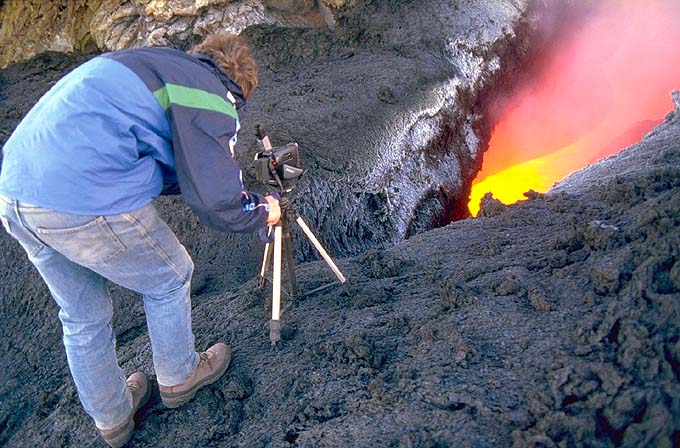 Although seemigly, visual monitoring of the volcanic activity also helps to understand all other data. Here Roby Carniel films the lava flow in the skylight on the tumulus vent on the NNE fissure of SEC. | 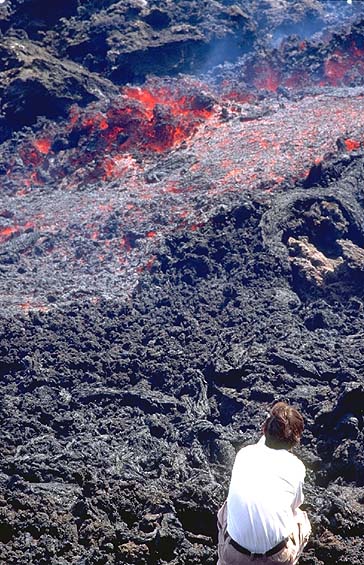 The infrared radiometer gives more precise measurements when its field of view is focussed on details of the lava flow. Here Andy Harris reads a temperature of 1075 degC in lava waves from the main channel. | 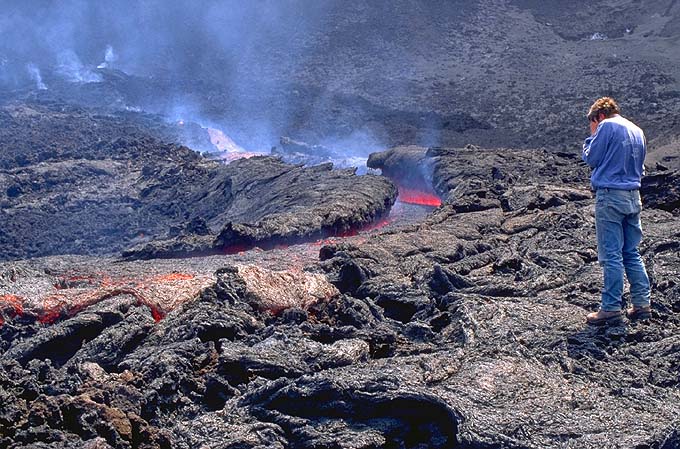 Roby Carniel records with a digital camera the waves which are travelling in the main lava channel. | 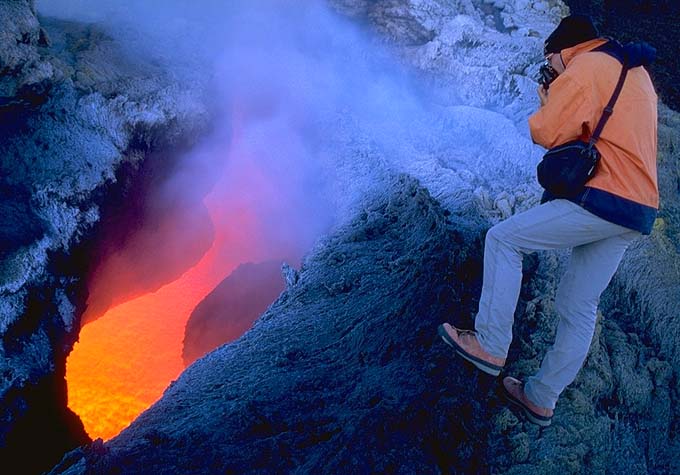 Tom Pfeiffer takes photos of the lava flow in the skylight at the top of the tumulus vent on the NNE fissure of SEC. |
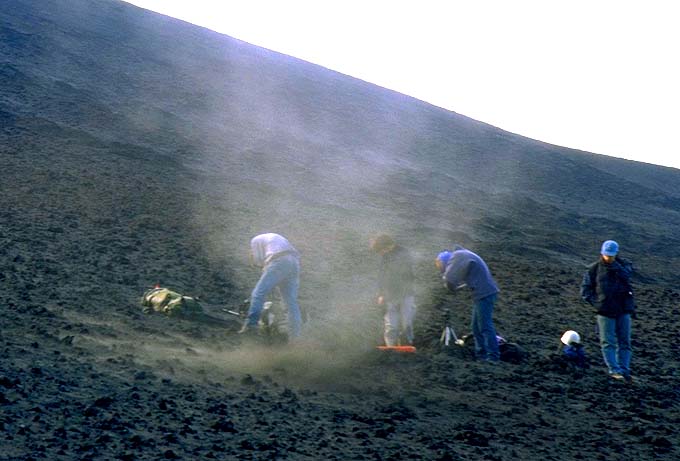 Major lava flows strongly heat the air which causes dust devils (miniature tornadoes). From left to right: Roby Carniel, Andy Harris, Scott Rowland and Jonathan Dehn trying to protect their equipment. | 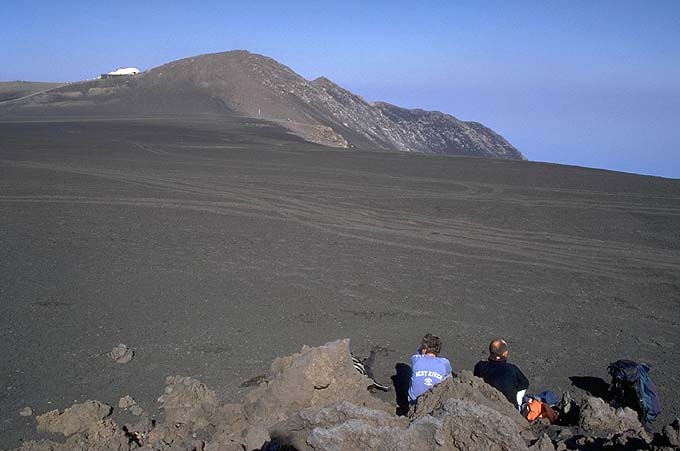 At the end of the working day Roby Carniel and Tom Pfeiffer wait for the INGV jeeps on the endless ash plain of Piano delle Concazze. Pizzi Deneri Observatory in the left background. | 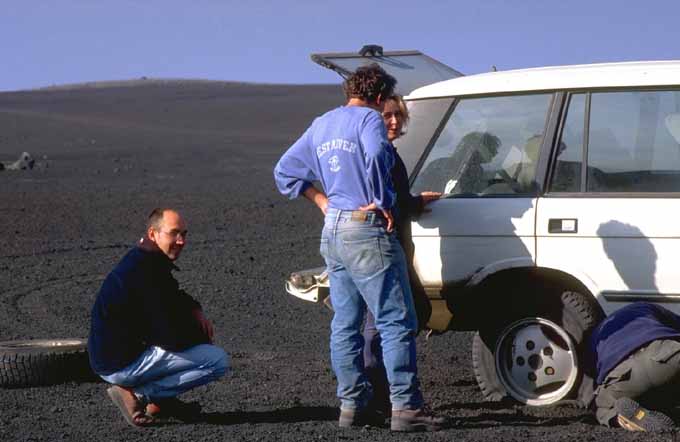 The jeeps have arrived but the harsh environment continues to give the volcanologists a hard time. Salvo Consoli repairs a tyre while Tom Pfeiffer, Roby Carniel and Sonia Calvari (INGV Catania) (from left to right) make «encouraging noises». | 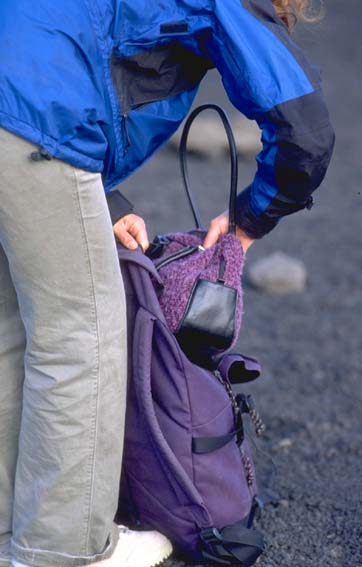 Some volcanologists retain their feminity despite all the dust and ash of Etna: Fashion remains important even in this remote and lofty place. |
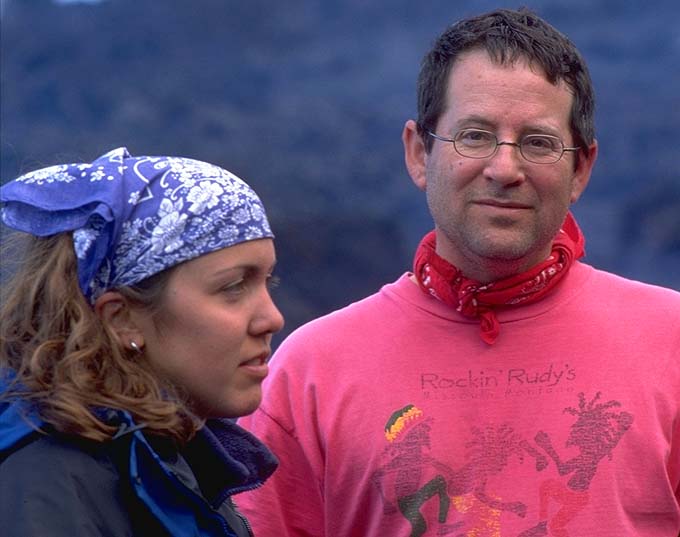 Nicole Lautze and Jonathan M. Lees (UNC). | 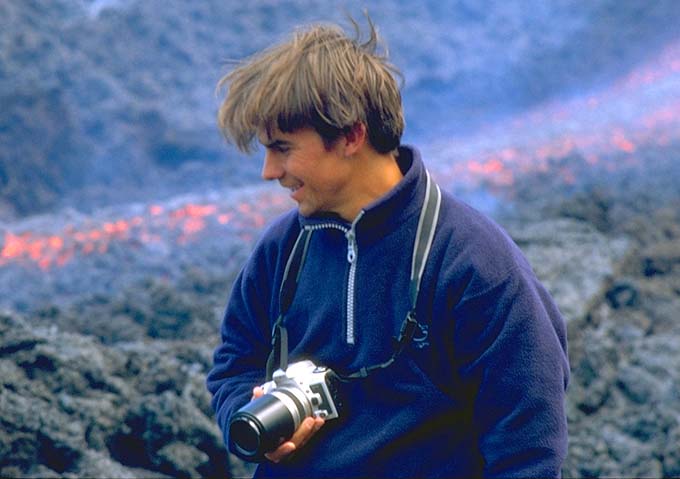 Andy Harris. | 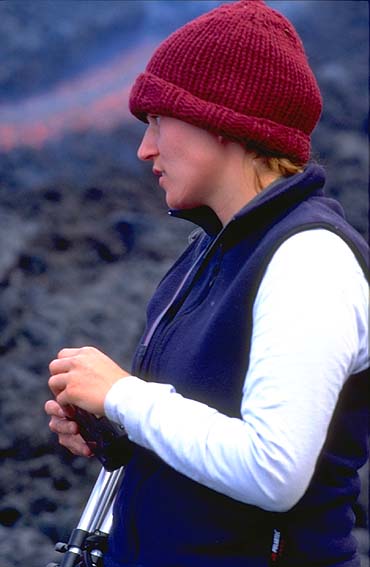 April McGreger (UNC). | 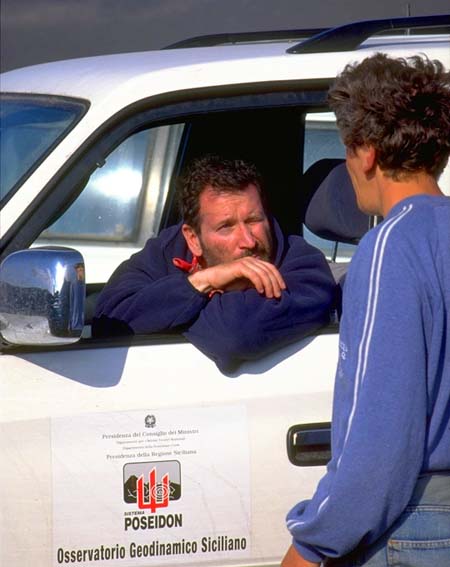 Roby Carniel and Marco Neri (INGV - Catania section). |
|